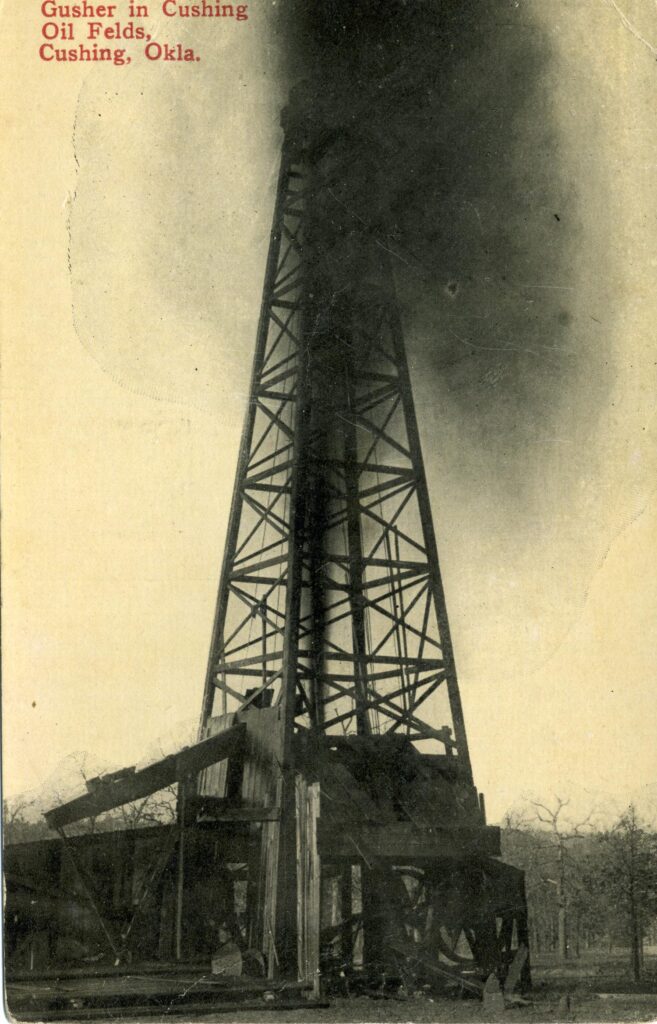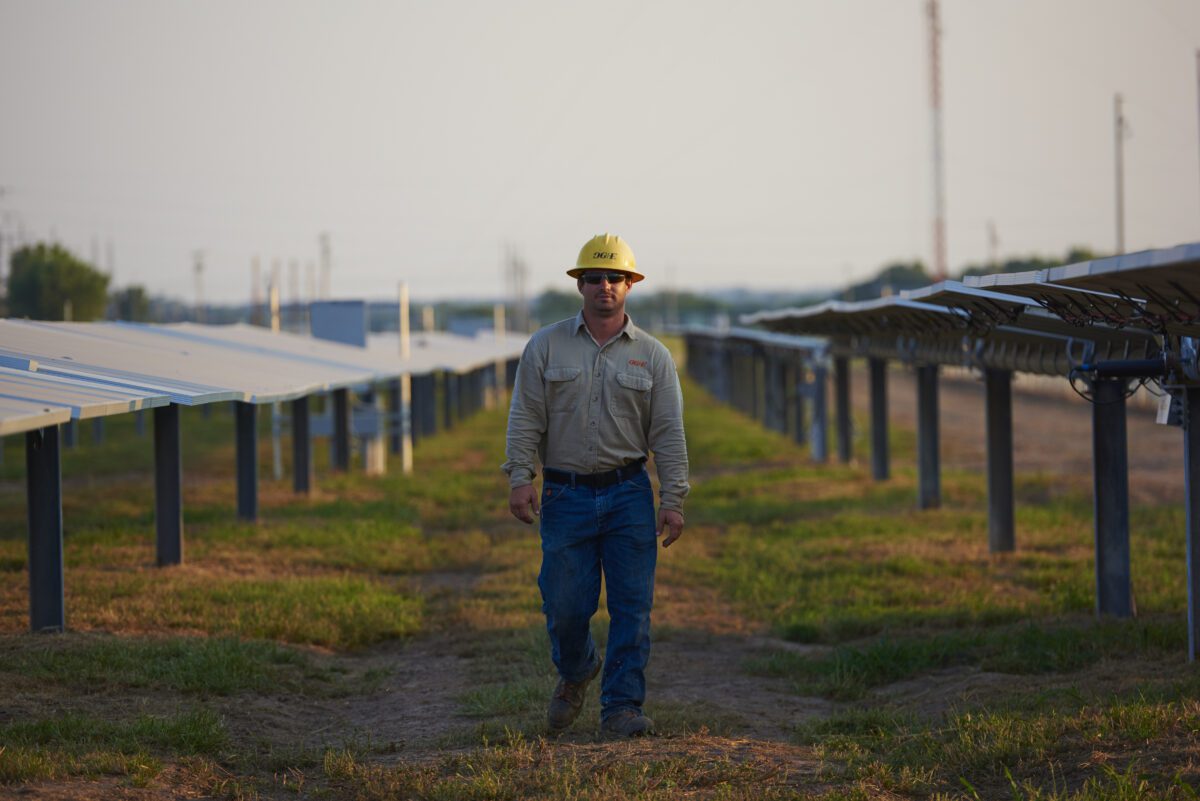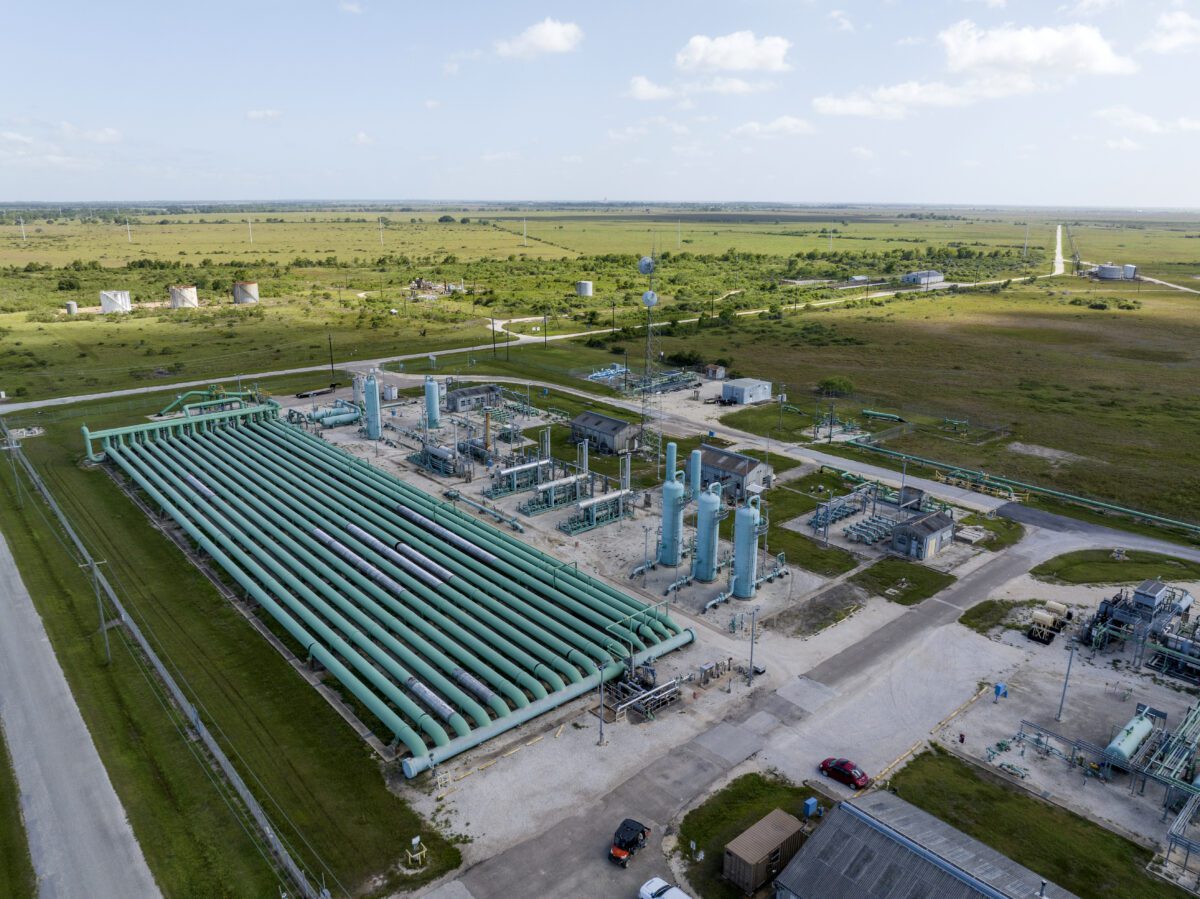Evolution of the Oil Industry
While the global energy transition raises questions about the future of oil, Oklahoma’s legacy has stood the test of time. For more than a century, its oilfields have powered economies, built cities and shaped communities — making petroleum a big part of the Sooner State’s identity. We dive into the timeline of Oklahoma’s oil reign.
Early Discoveries of Oil – Late 19th Century
Oklahoma’s story as an oil powerhouse began in the late 19th century. The first commercial oil well in the state, Nellie Johnstone No. 1, was completed in 1897 near Bartlesville in Indian Territory. Drilled by the Cudahy Oil Company, it marked the state’s entry into the petroleum age and ultimately produced more than 100,000 barrels before being capped in the 1960s, according to the Oklahoma Historical Society (OHS).
The momentum accelerated in 1905 with the discovery of the Glenn Pool field south of Tulsa, one of the richest oilfields of its time. Production was so abundant that pipelines, refineries and entire communities sprang up almost overnight, propelling Tulsa into its new role as the “Oil Capital of the World,” according to the Tulsa Historical Society (THS).

Boom Years – 1910s to 1930s
The early decades of the 20th century brought explosive growth. Discoveries at the Cushing-Drumright, Healdton and Oklahoma City oil fields fueled surges in drilling, storage and refining capacity. By the 1920s, Cushing was known as the “Pipeline Crossroads of the World,” a hub that moved crude to refineries across the country, according to the American Oil & Gas Historical Society (AOGHS).
Oil wealth transformed Oklahoma’s cities: skyscrapers rose in Tulsa and Oklahoma City, banks flourished and philanthropists endowed universities and museums. By 1927, Oklahoma’s annual production peaked at nearly 278 million barrels, cementing its role as a cornerstone of America’s energy economy, according to AOGHS records.
Mid-Century – 1940s to 1970s
During World War II, Oklahoma’s oil was essential to the Allied war effort. Its fields provided the fuel that powered tanks, planes and naval vessels. After the war, new drilling technologies, including secondary recovery methods like water flooding and gas injection, extended the life of mature fields. The mid-century period saw steady growth, as petroleum revenues bolstered state budgets and thousands of Oklahomans worked in oil-related jobs, according to the Oklahoma Geological Survey (OGS).
Energy Crises & Declines – 1980s to 1990s
The 1980s ushered in a painful downturn. Following a global oil glut and collapsing prices, Oklahoma’s once-booming industry went bust. Banks failed under the weight of unpaid energy loans, oil companies shuttered and thousands lost jobs. The collapse devastated towns reliant on oil and left skyscrapers half-empty in Oklahoma City and Tulsa. By the mid-1990s, according to the U.S. Energy Information Administration (EIA), annual production had dropped below 90 million barrels — a fraction of its former highs.
Shale Revolution – 2000s to Present
The early 21st century brought a renaissance through the shale revolution. Horizontal drilling and hydraulic fracturing unlocked previously inaccessible reserves in areas like the Woodford Shale of the Anadarko Basin. Production soared and Oklahoma’s output more than tripled between 2005 and 2019, peaking at over 217 million barrels that year, according to the EIA. Today, the state ranks among the top U.S. producers of both oil and natural gas. At the same time, Cushing, Oklahoma remains one of the most important crude oil storage and pricing hubs in the world, according to the EIA.
Innovation in Energy
Oklahoma has long been at the forefront of energy production, and recent technological advances are driving a new era of efficiency and innovation in both oil and gas and electric power.
From sophisticated drilling techniques and enhanced pipeline monitoring to automated grid management and energy storage solutions, technology is transforming how energy is produced, transmitted and managed across the state. These developments are helping Oklahoma maintain its position as a critical player in the nation’s energy infrastructure.
Drone technology is changing how Public Service Company of Oklahoma will prevent and respond to outages.
“Our recent winter storm drill highlighted drone-in-a-box technology that allows us to autonomously launch drones to survey power lines and look for issues, improving reliability and reducing outages for our customers,” says Leigh Anne Strahler, president and COO.
PSO is deploying smart grid technology to improve system efficiency and resiliency.
“We’re also exploring future AI-enabled solutions that could create even more efficiencies for PSO and our customers, ensuring they get the most out of every megawatt generated and every kilowatt consumed,” Strahler says.
OG&E launched its Grid Enhancement Plan in 2020, featuring AI-powered upgrades.
“OG&E’s smart grid technology, balanced power generation and electric vehicle fleet upgrades are all designed to strengthen the electric grid for the growing communities we serve,” says Ford Benham, OG&E’s Director of Environmental Operations. “The technology we’re implementing reduces outages and accelerates recovery after extreme weather. Serving communities with reliable, efficient energy at low costs is how we drive economic development now and in the future.”
NextGen Gas is one way Williams Companies, a Tulsa-based energy infrastructure company that owns and operates one of the largest natural gas pipeline systems in the United States, is revolutionizing its industry. NextGen Gas, a term coined by Williams, refers to natural gas that has been tracked and certified by an independent auditor as having low emissions across its entire value chain using technologies like blockchain, satellite monitoring and internal operational data.
“We’re talking end-to-end,” says Zach Keith, director of business development and sustainability at Williams. “Production through the midstream, through treatment and processing, transportation and delivering it to the user, whether that be a utility, an LNG shipper or a gas-to-power type of application.”
That’s technologically revolutionizing the industry, Keith says, by delivering trust through transparent and high veracity emissions data, which provides actionable insights.
“It incentivizes investment, not just in infrastructure, but in clean, affordable and reliable energy,” he says. “It really gets you into the nitty gritty about what we can do to continue to do better without sacrificing affordability or reliability.”
While AI is revolutionizing the oil and gas industry in the areas of exploration and drilling, Williams Companies is also harnessing its power internally for things like market intelligence and to empower employees through automating tasks and returning their time back to them for better collaboration and creative thinking, Keith says.
Power Innovation is a Williams initiative that involves providing turnkey natural gas-fired power generation solutions, infrastructure and energy services to meet the increasing demand from data centers and other high-energy industries.
“It’s sitting at the end of our traditional business and contemplating how Williams can participate in providing reliable power, affordable power and clean power to the end user, not just gas,” Keith says. “Taking our core competencies of rotating equipment and moving gas and applying them one step further to turning that gas into power. So we can actually do lots of different behind the meter applications.”
Renewables and the Energy Mix
While technology continues to revolutionize traditional energy production and delivery, Oklahoma is also exploring how innovation can shape the next chapter of its energy story. From wind farms to solar installations and advanced energy management systems, the state is applying the same forward-thinking approach to renewable resources, blending cutting-edge research with practical applications to meet evolving energy demands.
PSO is accelerating clean energy adoption through large-scale wind and solar assets, customer-facing renewable programs and smart grid innovation.The company recently expanded its renewable energy portfolio with nearly 500 MW of new wind and solar assets.
“We use a diverse mix of energy resources, including clean and efficient natural gas, alongside renewables to ensure grid resiliency and affordability,” Strahler says. “Our energy-saving programs help Oklahoma customers lower their energy bills and improve comfort year-round through rebates, free upgrades and personalized solutions for homes, businesses and communities.”
The company’s smart grid technology is also being deployed to enhance efficiency and reliability across all its systems, helping the environment by reducing carbon emissions through increased use of wind and solar energy.
“PSO’s customer programs and smart grid innovations promote energy efficiency and conservation,” Strahler says. “We continue working with customers to explore additional ways to reduce energy use during extreme temperatures.”
That helps reduce the amount of peak energy it needs to generate, which not only keeps prices affordable but also is environmentally sound.
“Our diverse energy mix, including renewables and clean natural gas, further supports a resilient and sustainable grid,” she says.
Environmental stewardship also is top of mind at OG&E where the company is decarbonizing its energy mix and engaging in biodiversity, habitat and community-based environmental initiatives in collaboration with local organizations to protect and preserve habitats and support pollinators, Benham says.

“As Oklahoma pioneers in wind and solar energy, today our all-of-the-above approach includes implementing more efficient and lower-emitting natural gas generation,” he says. “We also support water conservation, recycling and educational partnerships.”
That includes energy efficiency programs with the Oklahoma Thunder and community clean-up events.
“These efforts help reduce our environmental footprint while empowering communities to build a more sustainable future together,” Benham says.
Williams Companies is aggressively deployed across technological innovation, emissions reduction, clean energy infrastructure and ESG leadership.Williams is also committed to doing the right thing when it comes to land, Keith says.
“When we build assets, let’s say we build a pipeline through an area, we do some surface work,” he says. “We’re pulling up some of that grass, pulling up some of that native vegetation. But we always come back and reclaim that whole area. We want to make sure that native species are then replanted, monitored and measured for several years after construction is over to make sure we’re returning that back to its original state as much as possible. And a lot of that is in coordination and engagement with the local communities.”
Key Companies in Oklahoma’s Energy Market
ONE Gas
Spun off from ONEOK in 2014, ONE Gas is a regulated natural gas utility serving millions of customers in Oklahoma, Kansas and Texas. The company focuses on safe, reliable delivery of natural gas while leveraging modern pipeline monitoring and customer service. Its strategy emphasizes infrastructure investment to strengthen system resilience and efficiency. ONE Gas takes pride in sustainability initiatives that reduce emissions for a cleaner future.
ONEOK
Founded in 1906 as Oklahoma Natural Gas Company, ONEOK has evolved into one of the largest midstream energy companies in the U.S., specializing in natural gas gathering, processing and transportation. The company has been a pioneer in expanding interstate natural gas pipelines and developing integrated midstream infrastructure that supports the nation’s energy markets.
Continental Resources
Founded in 1967 by Harold Hamm, Continental Resources is a leading exploration and production company headquartered in Oklahoma City. The company played a central role in developing the Bakken and STACK shale plays, employing advanced horizontal drilling and hydraulic fracturing techniques to unlock significant oil reserves.
Devon Energy
Devon Energy, founded in 1971 and headquartered in Oklahoma City, is a major independent oil and gas producer focused on onshore U.S. operations. The company has been at the forefront of unconventional resource development, leveraging technological innovations in drilling, completion and production optimization.
Helmerich & Payne
Established in 1920, Helmerich & Payne is a Tulsa-based drilling contractor known for its innovative FlexRigs, which allow for faster, safer and more precise drilling in challenging environments. The company has been a leader in deploying automation, directional drilling and advanced rig technology across domestic and international markets.

Expand Energy
Expand Energy is an independent Oklahoma-based energy company focused on exploration and production of oil and natural gas. The company emphasizes operational efficiency through the use of advanced well completion and production technologies in key U.S. basins.
Williams Companies
Founded in 1908 and headquartered in Tulsa, Williams Companies is a major energy infrastructure firm specializing in natural gas processing, transportation and storage. The company has been a leader in building extensive interstate pipelines, compressor stations and gas processing facilities that support reliable delivery to markets across North America.
Featured photo caption: PSO is deploying smart grid technology to improve system efficiency and resiliency, as well as accelerating clean energy adoption through large-scale wind and solar assets, customer-facing renewable programs and smart grid innovation. Photo courtesy PSO























